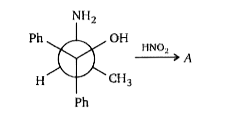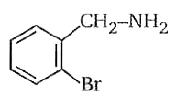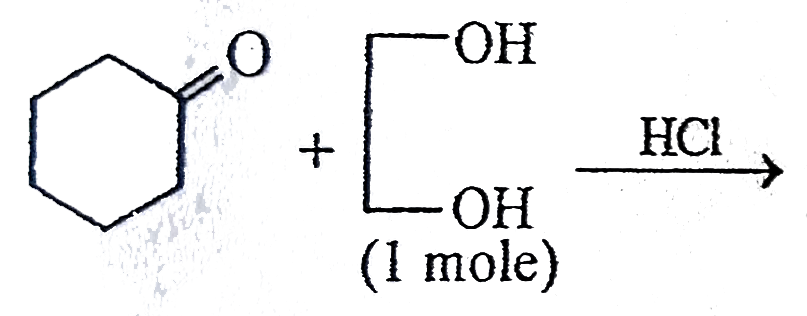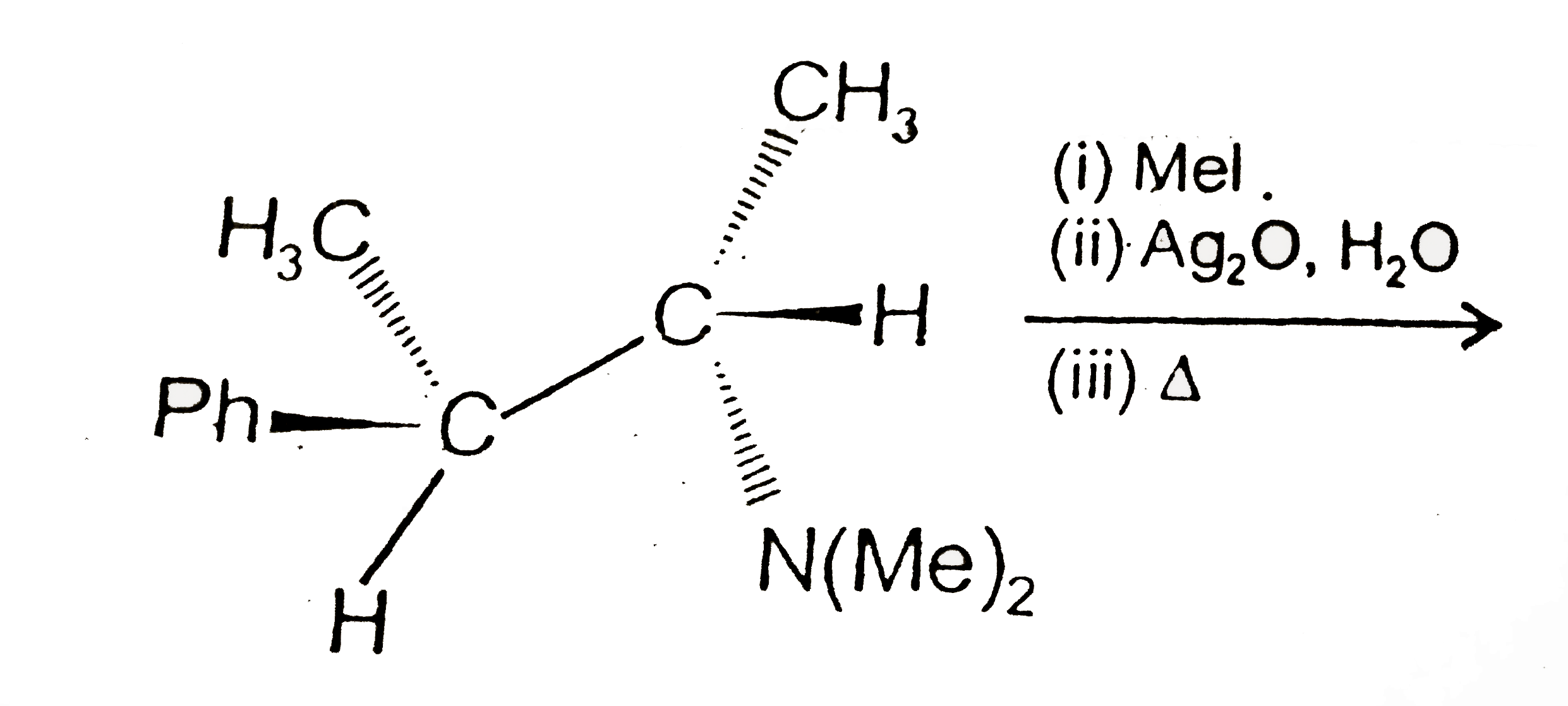What will be the major product obtained when 2-bromobutane reacts with alcoholic potassium hydroxide ? State the type of reaction involved in it.
To determine the major product obtained when 2-bromobutane reacts with alcoholic potassium hydroxide, we will follow these steps:
Step 1: Identify the Reactants
The reactant is 2-bromobutane, which has the following structure:
- 2-bromobutane: CH3-CHBr-CH2-CH3
Step 2: Understand the Reaction Type
The reaction involves alcoholic potassium hydroxide (KOH) which acts as a base. This reaction is classified as a dehydrohalogenation reaction, where a hydrogen halide (in this case, HBr) is eliminated from the alkyl halide.
Step 3: Mechanism of the Reaction
1. The alcoholic KOH will first deprotonate the hydrogen atom adjacent to the carbon that is bonded to the bromine atom (the β-carbon).
2. The bromine atom will leave, resulting in the formation of a double bond between the α-carbon and the β-carbon.
Step 4: Determine Possible Products
When 2-bromobutane undergoes elimination:
- If the hydrogen is removed from the carbon adjacent to the bromine (the β-carbon), we can form two possible alkenes:
1. But-2-ene: CH3-CH=CH-CH3 (more substituted)
2. But-1-ene: CH2=CH-CH2-CH3 (less substituted)
Step 5: Apply Zaitsev's Rule
According to Zaitsev's rule, the more substituted alkene is favored as the major product in elimination reactions. In this case, But-2-ene is more substituted than But-1-ene.
Step 6: Conclusion
The major product obtained from the reaction of 2-bromobutane with alcoholic potassium hydroxide is But-2-ene. The type of reaction involved is an elimination reaction.
---
The reactant is 2-bromobutane, which has the following structure:
- 2-bromobutane: CH3-CHBr-CH2-CH3
The reaction involves alcoholic potassium hydroxide (KOH) which acts as a base. This reaction is classified as a dehydrohalogenation reaction, where a hydrogen halide (in this case, HBr) is eliminated from the alkyl halide.
1. The alcoholic KOH will first deprotonate the hydrogen atom adjacent to the carbon that is bonded to the bromine atom (the β-carbon).
2. The bromine atom will leave, resulting in the formation of a double bond between the α-carbon and the β-carbon.
When 2-bromobutane undergoes elimination:
- If the hydrogen is removed from the carbon adjacent to the bromine (the β-carbon), we can form two possible alkenes:
1. But-2-ene: CH3-CH=CH-CH3 (more substituted)
2. But-1-ene: CH2=CH-CH2-CH3 (less substituted)
According to Zaitsev's rule, the more substituted alkene is favored as the major product in elimination reactions. In this case, But-2-ene is more substituted than But-1-ene.
The major product obtained from the reaction of 2-bromobutane with alcoholic potassium hydroxide is But-2-ene. The type of reaction involved is an elimination reaction.
Topper's Solved these Questions
Similar Questions
Knowledge Check
The major product obtained in the reaction
 A
A B
B C
C D
D

Major product obtained in the above reaction is :A B
B CRacemicDDiastereomers
CRacemicDDiastereomersWhat is the major product obtained in the following reaction ?
 A
A B
B C
C D
D
The major product obtained in the following reaction is

View SolutionThe major product obtained in the following reaction is

View SolutionThe major product obtained in the given reaction is :

View SolutionWhat is the major product obtained from the following reaction :-

View SolutionThe major product obtained in the reaction is

View Solution


